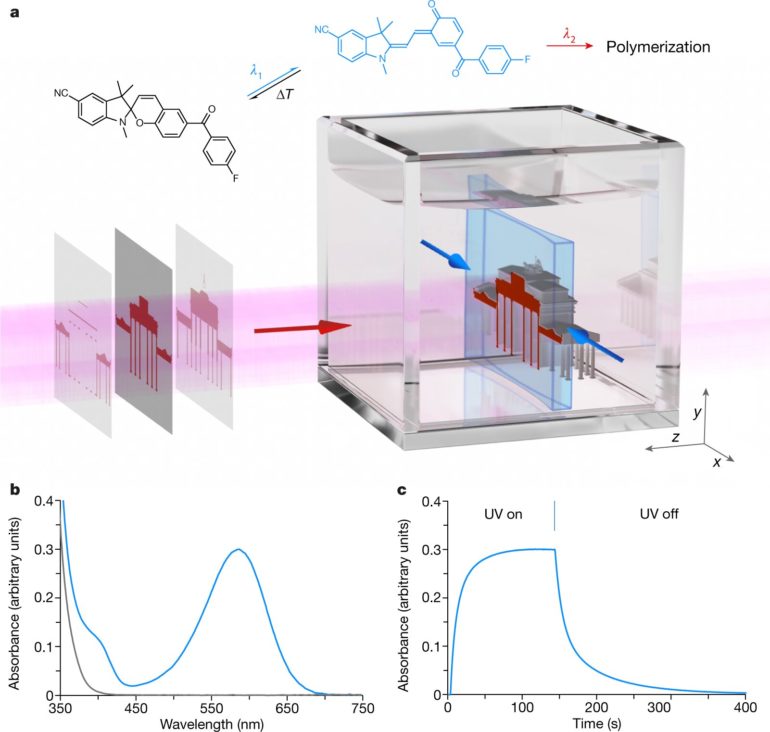A team of researchers affiliated with several institutions in Germany has developed new chemistry for improved control of the volume of liquid in volumetric additive manufacturing. In their paper published in the journal Nature, the group describes their process and how well it worked when tested.
Three-dimensional printing has made many headlines over the past decade as it has revolutionized the manufacturing process for a wide variety of products. Most 3-D printing involves controlling gantries that work together to position a nozzle that applies different types of material to a base to build products. More recently, some new types of 3-D printers have been developed for volumetric additive manufacturing, or VAM, that use laser light to induce polymerization in a liquid precursor to create products. They work by building products a layer at a time. In this new effort, the researchers have improved the way that polymerization starts in VAM applications. By adding the ability to control the volume of liquid precursor involved in the initiation process, they were able to increase the resolution of VAM printing by 10 times. They call their newly improved process xolography because it involves the use of two crossing light beams to solidify a desired object.
The process begins with creating a rectangular sheet of light using a laser fired into a tub of liquid precursor. The laser excites the precursor molecules inside of the rectangle, preparing them for the second beam of light. The second laser is then directed into the rectangle as a preformed image slice. When the slice is projected into the rectangle, the excited precursor molecules solidify into a polymer, forming a solidified slice. The resin volume is then moved (the light sheet remains fixed in place) so that the process can be repeated to create another slice. The overall process is repeated, creating more slices as it goes, until the desired shape is achieved.
The researchers demonstrated the improved resolution of their technique by first 3-D printing a tiny ball trapped inside of an 8-mm-diameter spherical cage. They followed that up by printing an aspherical Powell lens and then a 3-cm diameter bust of a human being.
New materials help expand volumetric 3-D printing
More information:
Martin Regehly et al. Xolography for linear volumetric 3D printing, Nature (2020). DOI: 10.1038/s41586-020-3029-7
Cameron Darkes-Burkey et al. High-resolution 3D printing in seconds, Nature (2020). DOI: 10.1038/d41586-020-03543-3
2020 Science X Network
Citation:
New chemistry for controlling the volume of liquid in volumetric additive manufacturing (2020, December 24)
retrieved 25 December 2020
from https://phys.org/news/2020-12-chemistry-volume-liquid-volumetric-additive.html
This document is subject to copyright. Apart from any fair dealing for the purpose of private study or research, no
part may be reproduced without the written permission. The content is provided for information purposes only.



